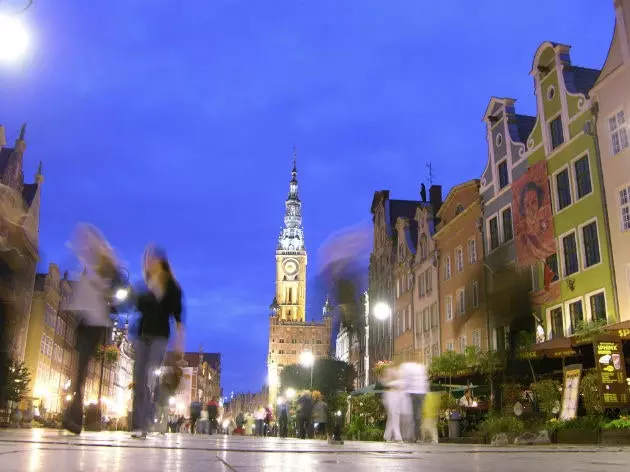
Gdansk, the euphoria of the Baltic
the character of Oskar Matzerath was born in the ancient city of Danzig in 1924. The adult boy from the Baltic stunted his growth the day he blew out his three candles and received a tin drum, a chilling symbol of the character's duality. The Nobel Prize for Literature, Gunter Grass , chose his hometown to develop the plot of the tin drum key work of contemporary literature. Something similar happens in Gdańsk . In the third Polish city, a pronounced nostalgia contrasts with the vital enthusiasm typical of recently liberated states.
Gdansk becomes a beautiful amalgamation of architectures of infinity of styles , the seafaring verve, the ways of a rich merchant, a artistic spirit reminiscent of the student groups of the seventies, hordes of university students living their best year, a certain proletarian atmosphere and a amazing adaptability . As the cradle of illustrious people, Gdansk's talent is embodied, among others, by the merits of Arthur Schopenhauer , Daniel Gabriel Fahrenheit, Gunter Grass, Lech Walesa and the incorrigible Klaus Kinski.
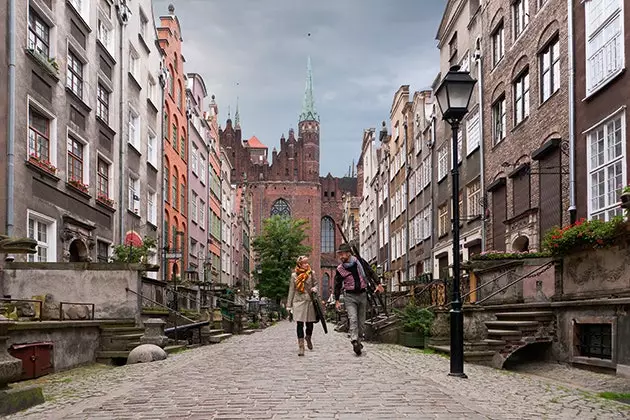
Mariacka, one of the most beautiful streets in Gdansk
The mighty city of Hanseatic League , the northern European confederation that controlled the trade of the medieval baltic , demonstrated its commercial solvency with the amber . Strategic point and center of territorial disputes, it starred in two of the essential chapters of the 20th century. The first, the September 1, 1939 , at which point the Second World War . In the face of the Nazi offensive, the Post Office employees resisted the attacks in front of their building, where the monument to the defenders of the Polish post.
It was not until the 1980s that Gdansk rewrote one of the key episodes in European history. Today in the neighborhood of Shipyards , a vintage bus roam the desert complex dotted with abandoned cranes. It was here that just three decades ago it was proclaimed the beginning of the end of the communist era . What began as a strike would transform into the trade union movement that annihilated the weakened foundations of socialism. Lech Walesa , undisputed leader of Solidarity (in 1980 it had almost ten million members) reached the presidency in the nineties and the Nobel Peace Prize . In this same enclosure, it has launched Young City Gdańsk , the public initiative that will transform the abandoned warehouses into an artistic space of 70 hectares. There are still years of remodeling left and several artists have already integrated their workshops and similar cultural projects.
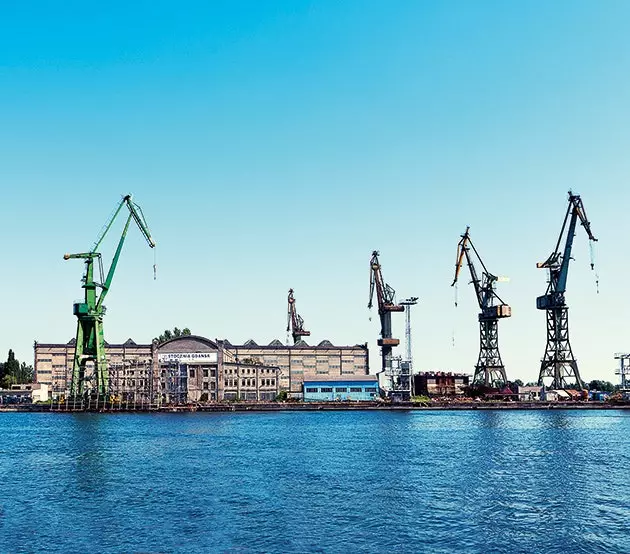
Panorama of abandoned shipyard cranes
It happens to Gdansk like the character in the tin drum : manifests its duality with its own instruments. To artistic avant-garde precedes its classic architecture (the one that managed to survive the Second World War) and in turn coexists in harmony with the latest in urban design. In Ulica Długa (or Camino Real) what remains is the classic beauty. The ancient route of the kings, which ends in the green door –at the river dock Motława – It is a walkway with formidable facades, once home to rich merchants, and where the gold gate , the Amber Museum , source Neptune (symbol of the city) and the Town Hall Gothic-Renaissance , one of the most elegant in the continent. In this historical festival Gdansk offers churches for all tastes. As an architectural landmark, the Basilica of Santa Maria . It has the merit of being the Europe's largest red brick sacred construction . Its gothic interior is an art exhibition medieval and baroque.
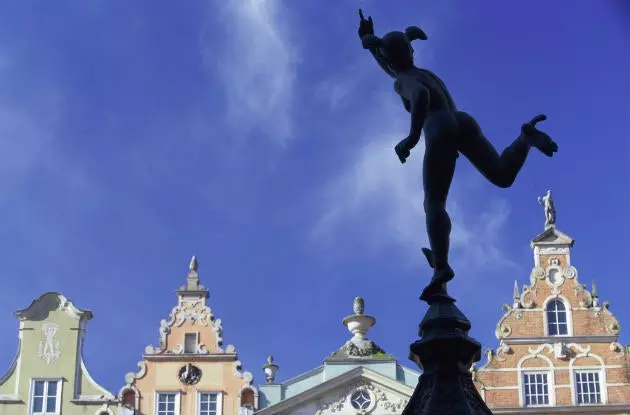
Gdansk: the artistic avant-garde comes from its classic architecture
Now, in its permanent contradiction, the city offers other avant-garde wonders. Just two years ago, the city won the hearts of the Spanish fans. The team played key matches in the Euro 2012 . Many make a pilgrimage to the stadium PGE Sand (4.5 hectares for 44,000 locations), whose lighting makes it a huge amber stone.
Front of Polish Baltic Philharmonic , the hustle and bustle of 21st-century Gdansk can be felt on the promenade Motława , when the sun goes down. In recent years, old premises from the socialist era have been recovered (especially the milk bars) to inaugurate gastronomic spaces, design bars and Berlin-style clubs. Possibly if he Oskar de Günter Grass If she stood before the charms of his hometown today, she would park her tin drum and make the wise decision never to grow up.
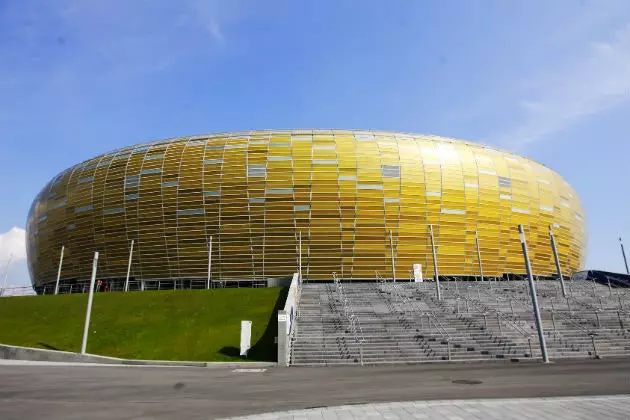
The PGE Arena stadium, a huge amber stone
WHERE TO SLEEP
Gdańsk. The hotel chosen by the Spanish team during the European Championship.
Grand Cru. Central with good breakfast.
Hanza. Exclusive and classic Monument to Shipyard Workers facing the Motława River.
WHERE TO EAT
Landscape. Home cooking and good views.
Kubicki. Exquisite Polish recipes and fresh fish.
Turystyczny . Typical milk bar, well-priced restaurant from the communist era.
metamorphosis. One of the most sophisticated kitchens in the city.
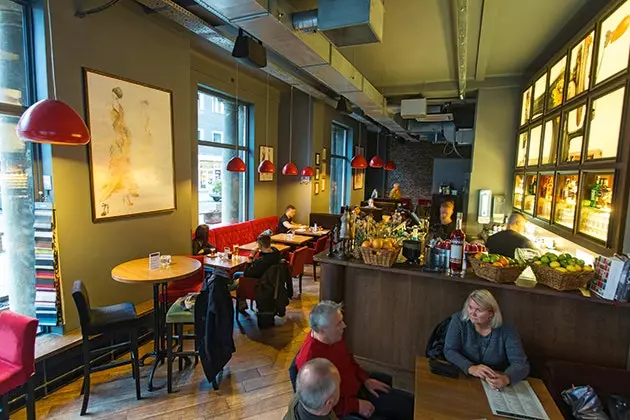
Tekstylia Bar, an old design restaurant
Pikawa Nice cafe in the center.
Tekstylia Ba r. Industrial in style, this former textile warehouse serves delicacies.
Feet and Ròza . Nice bistro displaying local art.
Pułapka. Good selection of local beers.
Fajne Baby! Literally 'cupcake bar'.
Brovania Brewery of the Gdansk hotel that makes its own fermented beverages.
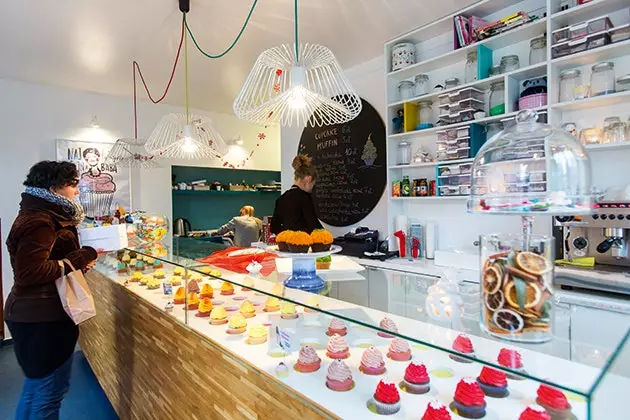
Fajne Baby! Bakery, cupcake bar
WHAT TO SEE
Gdansk, Sopot and Gdynia make up the metropolitan area of Trojmiast (the Tricity). Sopot and Gdynia boast beaches, beautiful walks and nightlife.
Oliwa Park . Beautiful green lung northeast of the historic center (Stare Miasto) with gardens in English and French style that houses a beautiful cathedral from the 13th century, with a wooden organ unique in Europe, and the elegant Abbot's Palace restaurant, a rococo-style palace that houses a restaurant specializing in contemporary cuisine.
Liberty Walk. The underground museum commemorating the Solidarity movement.
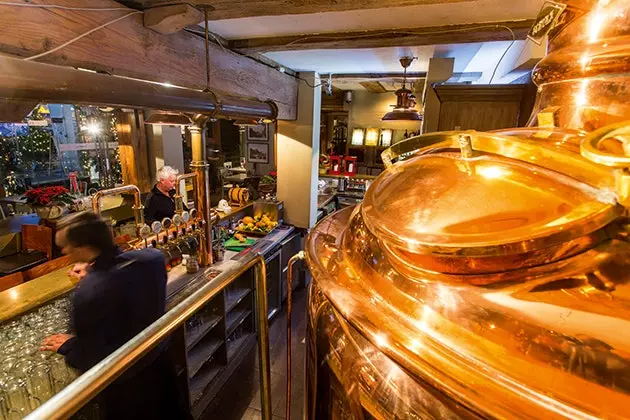
Brovania, a brewery that makes craft fermented
shower Tiny street, former home to many of its illustrious residents
Amber Museum In the Tower of the old Prison, the history of the Northern Gold.
Artus Court Formidable mansion, meeting place for merchants and politicians from the 16th and 17th centuries. In its main hall, an imposing fireplace (1546) of more than ten meters of height is u
WHERE TO BUY
DH Wielkie Mlyn . Mall inside the Grand Mill.
Mariacka . One of the most beautiful streets of Gdansk concentrates the largest number of jewelry stores dedicated to amber.
- This article is published in the April 72 Condé Nast Traveler magazine. This issue is available in its digital version for iPad in the iTunes AppStore, and in the digital version for PC, Mac, Smartphone and iPad in the virtual newsstand of Zinio (on Smartphone devices: Android, PC/Mac, Win8, WebOS, Rim, iPad) .
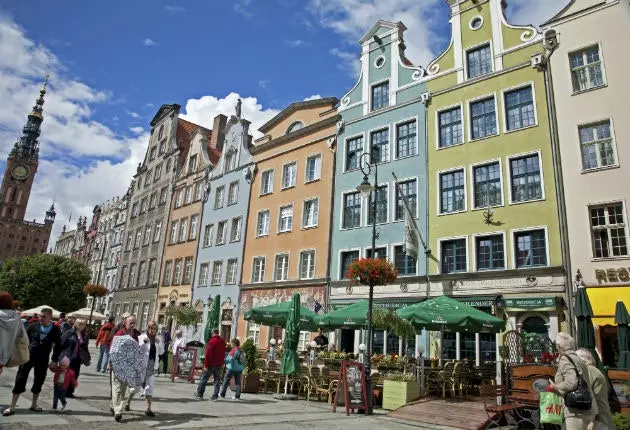
Mariacka Street ends at the beautiful Basilica of Santa Maria
